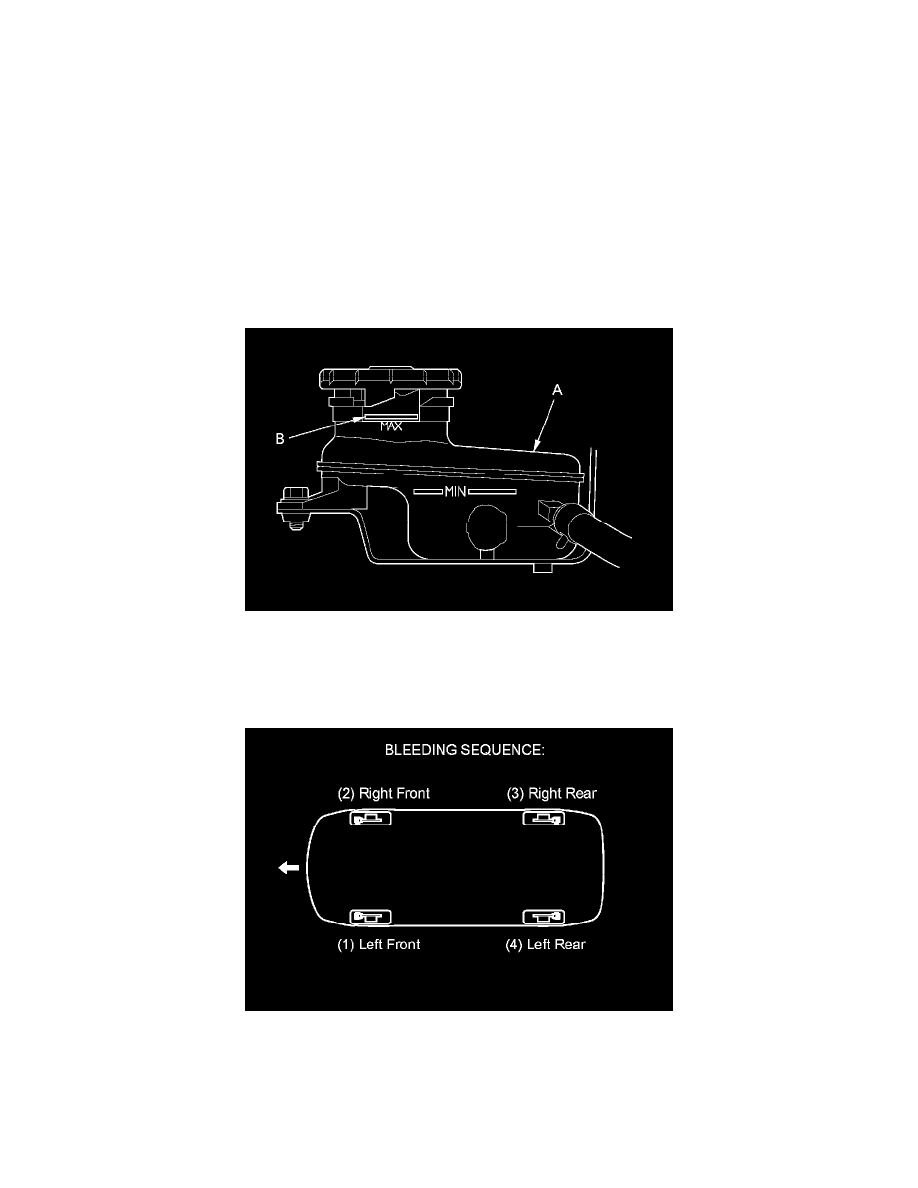RDX AWD L4-2.3L Turbo (2010)

Brake Bleeding: Service and Repair
Brake System Bleeding
NOTICE
Do not spill brake fluid on the vehicle; it may damage the paint. If brake fluid gets on the paint, wash it off immediately with water.
NOTE:
-
Do not reuse the drained brake fluid. Use only new Acura DOT 3 Brake Fluid from an unopened container. Using a non-Acura brake fluid can
cause corrosion and shorten the life of the system.
-
Make sure no dirt or other foreign matter is allowed to contaminate the brake fluid.
-
The reservoir connected to the master cylinder must be at the MAX (upper) level mark at the start of the bleeding procedure and checked after
bleeding each wheel. Add fluid as required.
1. Make sure the brake fluid level in the reservoir (A) is at the MAX (upper) level line (B).
2. Have someone slowly pump the brake pedal several times, then apply steady pressure.
3. Start the bleeding at the driver's side of the front brake system.
NOTE: Bleed the calipers in the sequence shown.
4. Attach a length of clear drain tube (A) to the bleed screw (B), then loosen the bleed screw to allow air to escape from the system. Then tighten the
bleed screw securely.
NOTE: Do not loosen the special bolt (C) on the rear caliper.
